The number of documents that restaurants and bars need to handle is overwhelming. You are constantly hammered with invoices, receipts, statements, operating agreements, leases, licenses, liquor board reports, purchase orders, tax returns, K-1s, etc. Luckily, digitization and cloud migration have alleviated some of this burden. Well, has it? We frequently talk to operators storing the same documents in multiple places – their office, accounting system, GDrive, and invoice management system (Marginedge, Xtrachef, etc.). Digitization was supposed to mitigate the issue but has exacerbated it by causing more confusion among operators. We wrote this article to debunk and clarify the financial documentation retention myths you’ve heard through TikTok and other grapevines.
Digital vs. Paper
You do not need to retain paper copies of digitized documents for tax and accounting purposes. You may need paper copies for other purposes, such as alcohol invoices for the liquor board, but not for accounting purposes. You can store documents in your accounting software, GDrive, Dropbox, restaurant invoice management system, etc. Regardless of the method used to store documents digitally, you must keep them organized to make them easy to retrieve. For example, at The Fork, we attach all invoices to their respective transactions in the general ledger, making it extremely easy to retrieve and review. You could organize other cloud storage by date and type of expense, or by vendor and date. When choosing a cloud storage option, ensure that you can easily transfer the files to another platform in case you decide to switch your storage option.
Retention period
The document retention period for tax and accounting purposes is based on the period of limitations for your tax returns. The period of limitations is the period of time for which you can amend your return to claim a credit or refund, or the IRS can audit or examine your returns and assess additional tax. The period of limitations varies as shown below:

The retention period for payroll documents, such as payroll journals, W-2s, 941s, paystubs, etc. is at least four years; some jurisdictions or agencies may require additional years of retention.
You will frequently hear 7 years for the document retention period because it’s the longest you’ll have to retain documents, assuming you haven’t willfully committed fraud and/or not filed a return.
Overall, 7 years is a good rule of thumb for all financial documents, but we recommend storing files digitally and indefinitely in the cloud since they don’t take up physical space, and storage costs are cheap. You never know what you’ll need.
Period of Limitations
The period of limitations generally starts after the returns are filed. If the returns are filed before the due date, it starts on the due date. For example, if you file your 2022 partnership tax return on March 1, 2023, the period of limitations begins on March 16, 2023 because the due date for filing partnership tax returns is on March 15.
The period of limitations for fixed or intangible assets starts after the disposition date of the assets. For example, assume you buy a building on Jan 1, 2010, and dispose of it on Dec 31, 2023. You must retain the purchase and sale settlement statements (HUD-1) and depreciation schedules until Dec 31, 2030.
Types of Documents to Retain
It can be difficult to retain documentation for every transaction incurred by your restaurant or bar. Yet, many operators think this is the requirement, stressing themselves out to ensure every transaction has a receipt. For internal control purposes, that is good practice. However, it may not be required for accounting and tax purposes. The general rule is to retain documents to prove your income and expenses. That’s it! For example, assume you purchase a $4,500 blender from Adams Burch, and have capitalized it as a fixed asset instead of expensing it. Your GAAP or IRS auditor may request an invoice proving it’s a legitimate business purchase that should be classified as a fixed asset. If you don’t have an invoice, they may ask you for other support, such as a receipt, bank statement showing the purchase, and/or proof of the asset itself. It’s a little vague, but the more, the better. Ideally, you want the invoice, payment receipt, bank statement, and proof of the fixed asset. The more support you provide, the less scrutiny you’ll get for other transactions. For taxes, you are responsible for the burden of proof. Here are the documents you should try to retain to prove transactions in your books and tax returns:
- Receipts
- Invoices (Accounts Receivable)
- Bills (Accounts Payable)
- Bank Statements
- Bank Reconciliations
- Payment Confirmations
- Loan Statements
- Point of Sale (POS) Sales Reports
- Petty Cash Log
- Petty Cash Receipts
- Reimbursement Reports
- Cancelled Checks
- Deposit Slips
- Inventory Report/Schedule
- Fixed Asset Schedule
- Payroll Reports
- Insurance Policies
- Payroll Taxes (W-2s/941s/etc.)
- Form 1099s Received
- Form 1099s Issued
- Form W-9s/W-8Ben
- General Ledger
- Financial Statements (Profit & Loss/Balance Sheet/Etc.)
- Federal and State Tax Returns
- Operating Agreement/Bylaws/Articles of Organization/Articles of Incorporation
Financial Document Retention in Restaurants and Bars
When it comes to retaining documents for your restaurant or bar, remember the following advice from The Fork CPAs:
- Store all financial documents digitally for at least 7 years (indefinitely if possible)
- Store your financial documents in an easily retrievable format
- The more support and documentation, the better.
You didn’t open a restaurant to manage paperwork. Therefore, it’s important to hire an experienced food and beverage bookkeeper and accountant who can manage this for you. Feel free to reach out to us if you’re currently spending your valuable time on financial document retention.







